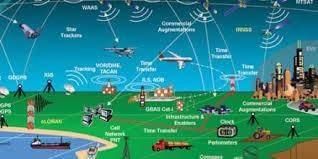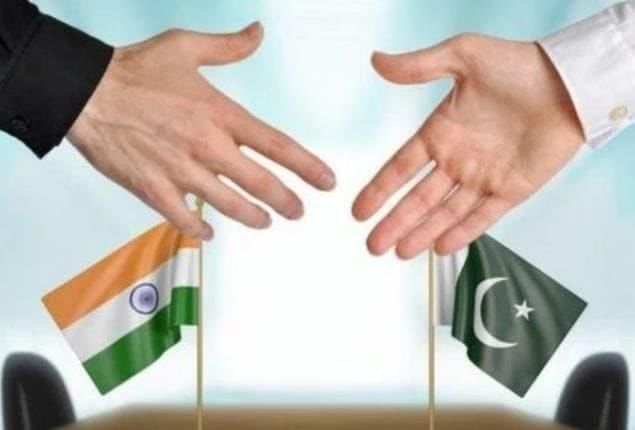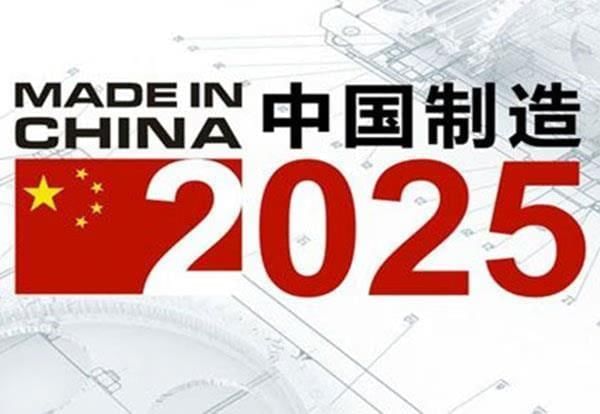Weekly Current Affairs (1st to 7th July 2025) | General Test Preparation for CUET UG - CUET Commerce PDF Download
The Future of the Dalai Lama Institution

Why in News?
- The Dalai Lama, Tenzin Gyatso, who serves as the spiritual leader of Tibetan Buddhism, has recently made statements that have ignited discussions regarding the future of the Dalai Lama institution. As he approaches his 90th birthday on July 6, 2025, he indicated on June 30, 2025, that the continuation of this institution will occur within a defined framework. A religious conference is scheduled to take place from July 2 to July 4 in McLeodganj, Dharamshala, where a video statement from him is highly anticipated. This statement may clarify the process for selecting his successor.
Key Takeaways
- The Dalai Lama is approaching his 90th birthday, raising questions about the future of the institution.
- A conference in Dharamshala may provide insights into the succession process.
- Concerns exist regarding political influence in the selection of the next Dalai Lama.
Additional Details
- Background: The current Dalai Lama, born in 1935, was recognized as the reincarnation of the 13th Dalai Lama at the age of two. He has become a global symbol of peace and compassion, with the institution evolving to hold both spiritual and political significance over centuries.
- Significance of Succession: The choice of the next Dalai Lama is pivotal for Tibetan Buddhists and global politics. The current Dalai Lama has stated that the institution could cease to exist if it becomes subject to political manipulation, particularly amidst concerns over Chinese influence in the selection process.
- Chinese Influence: The Chinese government views the Dalai Lama's succession as a national interest issue, aiming to control Tibetan Buddhism. This includes promoting a pro-Beijing Panchen Lama and implementing policies that threaten Tibetan culture.
- Future Directions: The Dalai Lama has shifted from advocating for complete independence to seeking greater autonomy for Tibet within China. His future successor is expected to be born outside Tibet, which raises further questions about the institution's relevance and survival.
- International Implications: The succession of the Dalai Lama will have significant implications for India, which hosts the Central Tibetan Administration, and the United States, where Tibet is a key issue in diplomatic relations with China.
The upcoming events surrounding the Dalai Lama's potential succession are crucial not only for Tibetan Buddhism but also for international relations, particularly in the context of Chinese policies and human rights in Tibet.
GPS Interference
 Why in News?
Why in News?
- Recent events highlight the escalating danger of GPS interference, particularly impacting aviation and maritime navigation. Notable incidents include a Delhi-Jammu flight being forced to return due to navigation difficulties, two tankers colliding near the Strait of Hormuz, and a container ship running aground off Jeddah, all linked to GPS interference.
Key Takeaways
- GPS interference can disrupt navigation for both aircraft and ships.
- Incidents of GPS spoofing are on the rise, with significant implications for safety.
Additional Details
- What Is GPS Interference?GPS interference encompasses two primary methods:
- Jamming: This occurs when a device emits strong radio signals that overpower GPS signals, preventing receivers from accurately determining their location or time.
- Spoofing: This method involves sending false GPS signals to mislead receivers, causing them to trust incorrect data.
- Why Is GPS Interference Dangerous? It poses significant risks to military and civilian operations, as spoofing can mislead pilots about their aircraft’s location, increasing collision risks, while ships can lose situational awareness, leading to accidents.
- The Scale of the Threat: In 2024, reports indicated up to 700 GPS spoofing incidents daily globally, suggesting potential systemic failures across vital sectors, including road transport.
- Common Locations for GPS Interference: Sources include electromagnetic radiation, adverse weather, and intentional jamming. Regions like the Persian Gulf and Red Sea are particularly affected due to ongoing conflicts.
- Historical Context: A notable GPS spoofing attack occurred in Russia in 2017 when over 20 ships near Novorossiysk Port experienced navigation errors, indicating the risk of deliberate spoofing attacks.
- Mitigation Strategies:
- Affected aircraft must utilize alternative navigation systems such as Inertial Navigation Systems (INS) and ground-based aids.
- Ships typically rely on auto-pilot but switch to manual control upon detecting spoofing, utilizing terrestrial navigation methods.
- Advanced Navigation Systems: To combat GPS interference, companies are adopting multi-constellation Global Navigation Satellite Systems (GNSS), integrating various countries' satellites to improve reliability. The Indian military has developed its own system, NavIC, for precise positioning services.
- Diversification: Operators are encouraged to use multiple navigation systems to decrease dependence on a single source, enhancing resilience against potential GPS disruptions.
The rise in GPS interference incidents necessitates strong measures to protect critical navigation systems essential for both civilian and military operations.
Canada Scraps Digital Services Tax
 Why in News?
Why in News?
- On July 2, 2025, Canada announced the cancellation of its planned Digital Services Tax (DST) just prior to its enactment. This decision followed significant pressure from the United States, particularly from President Donald Trump. The DST was intended to impose a 3% tax on revenues earned by foreign digital companies from Canadian users, but it had sparked controversy due to its retroactive payment clause and potential financial strain on major American tech firms.
Key Takeaways
- Canada withdrew its Digital Services Tax before implementation.
- The tax was aimed at collecting revenue from large foreign tech companies.
- The move was influenced by US government pressure.
Additional Details
- What is Canada’s Digital Services Tax? The DST aimed to address the taxation gap concerning large international tech firms operating in Canada by imposing a 3% tax on revenues exceeding $20 million generated from Canadian users. This tax was designed to ensure that digital companies contributed fairly to the Canadian economy.
- Implications of the Tax: Had it been enforced, the DST could have led to American companies paying around $2.7 billion to Canada. Major firms like Google, Apple, and Amazon would have faced significant financial impacts, raising concerns about trade relations with the US.
- US Response: President Trump condemned the tax as an attack on US interests, threatening to halt trade negotiations with Canada if the DST proceeded. This reaction highlighted the delicate nature of trade relations between the two countries.
- Importance of US-Canada Trade Relations: The US is Canada’s largest trading partner, with Canadian exports to the US exceeding $412 billion in 2024. Recognizing this economic interdependence, Canada aimed to maintain positive dialogue with the US, leading to the strategic withdrawal of the DST.
- Domestic Reactions to the Tax: Within Canada, the DST faced criticism for potentially increasing costs for digital services, which could negatively impact families and businesses. The Canadian Chamber of Commerce argued against the tax, advocating for international collaboration instead.
- Future Trade Negotiations: With the DST scrapped, Canada plans to continue discussions with the US to establish a new economic and security relationship. Prime Minister Mark Carney emphasized that future agreements should prioritize the interests of Canadian workers and businesses.
The decision to retract the DST reflects a careful balance between addressing domestic priorities and navigating international relationships. Canada’s focus is now on fostering constructive trade negotiations with the US to benefit both nations.
India-Pakistan Prisoner Exchange
 Why in News?
Why in News?
- On July 1, 2025, India and Pakistan completed their biannual exchange of prisoner lists. This initiative, rooted in the Agreement on Consular Access established in 2008, seeks to foster transparency and cooperation on humanitarian issues between the two nations. The exchanged lists comprised both civilian prisoners and fishermen held by each country.
Key Takeaways
- India received a list of 246 prisoners from Pakistan, including 53 civilians and 193 fishermen.
- In return, India provided a list of 463 Pakistani prisoners, with 382 civilians and 81 fishermen.
- The exchange was conducted through diplomatic channels simultaneously in New Delhi and Islamabad.
Additional Details
- Background of the Agreement: The Agreement on Consular Access, signed in 2008, requires both nations to exchange prisoner lists twice a year to address humanitarian concerns and enhance bilateral relations.
- Humanitarian Concerns: Both countries expressed concerns about the welfare of prisoners, with Pakistan requesting the release of prisoners who have completed their sentences and India urging the expedited nationality verification for its prisoners.
- Since 2014, India has successfully repatriated 2,661 fishermen and 71 civilian prisoners from Pakistan, including 500 fishermen and 13 civilian prisoners in 2023 alone.
The biannual exchange of prisoner lists serves as a vital confidence-building measure, encouraging transparency and dialogue between India and Pakistan. Continued commitment to humanitarian issues is essential for enhancing mutual trust and improving relations between the two nations.
Karnataka Mis-Information and Fake News (Prohibition) Bill, 2025
Why in News?
- The Karnataka Mis-Information and Fake News (Prohibition) Bill, 2025, was introduced to regulate social media content by defining and penalizing fake news. This legislation enforces severe penalties, including imprisonment of up to seven years for offenders, marking a significant step in the intersection of digital communication and free speech. The bill establishes a committee with the authority to label content as fake news, which has raised concerns regarding potential censorship and state overreach.
Key Takeaways
- The Bill broadly defines fake news, including purely fabricated content and distorted media.
- Misinformation is characterized as knowingly or recklessly making false statements.
- Exemptions are made for opinions and artistic expressions, though ambiguity remains.
- An appointed Authority, led by the Minister for Kannada and Culture, will oversee enforcement.
- The Bill follows a Bombay High Court ruling regarding the need for judicial oversight.
- Critics warn that vague definitions could infringe on free speech rights.
- This legislation could set a precedent for other states in India.
Additional Details
- Authority and Enforcement: The enforcement authority includes representatives from the Legislative Assembly, Legislative Council, social media platforms, and a senior bureaucrat, tasked with banning the promotion of fake news.
- Legal Context: The Bill comes after a court ruling that highlighted the necessity for clear definitions to safeguard free speech.
- Implications for Free Speech: Critics argue the vague terms may disproportionately target dissenting voices, raising concerns about the potential misuse of the law.
- Public Reaction: Public sentiment is divided; while some support the Bill as a means to combat misinformation, others fear it may lead to censorship and suppression of dissent.
In summary, the Karnataka Mis-Information and Fake News (Prohibition) Bill, 2025, represents a bold move towards regulating digital content in India but raises significant questions about the balance between combating misinformation and protecting free speech.
Savitribai Phule National Institute of Women and Child Development Renamed
Why in News?
- The National Institute of Public Cooperation and Child Development has been renamed to the Savitribai Phule National Institute of Women and Child Development. This change signifies a strong commitment towards the progress and support for women and children in India, aligning with regional needs and developmental goals.
Key Takeaways
- The new name reflects a dedication to enhancing women's and children's development.
- A new Regional Centre will be inaugurated in Ranchi, Jharkhand, on July 4, 2025.
- The Ranchi Centre will serve the Eastern region, focusing on training and research for major programs.
Additional Details
- Regional Centre in Ranchi: This Centre will address the needs of states like Jharkhand, Bihar, Odisha, and West Bengal. It will facilitate training for flagship programmes such as Mission Shakti, Mission Vatsalya, and Poshan 2.0.
- The Ranchi Centre aims to improve accessibility for over seven lakh functionaries across 115 districts.
- It will provide an Advance Diploma in Child Guidance and Counselling to empower frontline workers.
- Renaming the Institute honors Savitribai Phule, a pivotal social reformer, reaffirming the government’s focus on women and child-centric development.
The establishment of the Ranchi Centre is a strategic step towards strengthening the implementation of flagship missions and ensuring localised solutions for women's empowerment and child welfare. This initiative aligns with the vision of a developed India by 2047 under Prime Minister Shri Narendra Modi’s leadership, aiming for an inclusive and healthier society.
Russia Becomes First Country to Recognise Taliban Government

Why in News?
- On July 5, 2025, Russia took a significant step by officially recognising the Taliban government in Afghanistan. This recognition comes after the Taliban's removal from Russia's list of outlawed organizations, marking the first formal acknowledgment of the regime since it regained power in 2021. This move has essential implications for international relations and geopolitics in the region.
Key Takeaways
- Russia's recognition of the Taliban marks a historic diplomatic shift.
- This development reflects Russia's strategic interests in Afghanistan and the broader region.
- The move could influence other countries' relations with the Taliban government.
Additional Details
- Background: The Taliban took control of Afghanistan in 2021, following the ousting of the previous government. They have been seeking international recognition to help stabilise the country and attract foreign investment.
- Russia's Official Announcement: The Russian Foreign Ministry confirmed the acceptance of credentials from Taliban-appointed Ambassador Gul Hassan Hassan, effectively ending the Taliban's designation as a terrorist group in Russia.
- Geopolitical Implications: Russia aims to use Afghanistan as a transit corridor for energy exports to Southeast Asia, thereby enhancing its influence in Central and South Asia amid shifting global power dynamics.
- Humanitarian Challenges: Despite diplomatic advances, Afghanistan faces severe humanitarian crises, including widespread drought impacting agriculture and livestock, which threatens the livelihoods of many.
- International Reactions: Russia's recognition has faced backlash from human rights activists who argue it legitimises a regime that restricts women's rights and education.
The recognition by Russia may pave the way for other nations to reconsider their stance on the Taliban, influencing Afghanistan's potential for economic recovery and international integration while highlighting the ongoing tension between strategic interests and human rights considerations.
Made in China 2025
 Why in News?
Why in News?
- The recent recall of Chinese engineers from Foxconn’s iPhone factories in India highlights ongoing tensions in global manufacturing shifts. Apple's decision to enhance production in India aligns with the government's 'Make in India' initiative. Concurrently, China's 'Made in China 2025' policy, introduced in 2015, continues to influence global industry dynamics, despite being less publicized. A thorough understanding of this policy's objectives, achievements, and obstacles provides critical insights into India's manufacturing aspirations.
Key Takeaways
- Made in China 2025: A strategic framework designed to elevate China's manufacturing from low-cost production to high-value, innovation-centric industries.
- Focus Areas: It targets ten essential sectors, including electric vehicles, artificial intelligence, aerospace, biotechnology, new materials, and high-tech rail systems.
Additional Details
- Global Reaction: The policy is seldom discussed by Chinese officials due to international backlash, as Western nations perceive it as protectionist, unfairly benefiting Chinese companies.
- State Support: China provides subsidies, low-interest loans, and tax incentives, facilitating low-cost exports that challenge foreign industries.
- Achievements: China has become a leader in the production of lithium-ion batteries, solar panels, and electric vehicles, and its high-speed rail technology is globally acclaimed.
- Challenges: Despite successes, China faces difficulties in semiconductor manufacturing and developing passenger aircraft.
- Lessons for India: India can learn from China’s integrated approach to innovation, R&D investment, and supply chain development, while ensuring growth in both services and manufacturing sectors.
- Apple's Manufacturing Shift: Apple's move to India underscores a broader trend of diversifying supply chains, although the recall of Chinese engineers indicates complexities in technology transfer and workforce management.
In conclusion, as India aims to build a robust industrial base through the 'Make in India' initiative, it must address infrastructure gaps and skill shortages while drawing valuable lessons from China's manufacturing experiences.
Andhra Pradesh Launches Sarvepalli Radhakrishnan Student Kits
Why in News?
- The Andhra Pradesh government has initiated the Sarvepalli Radhakrishnan Vidyarthi Mitra Kits scheme in 2025, aimed at providing complimentary school kits to over 35 lakh students from Classes 1 to 10. The initiative is designed to foster equality among students and eliminate political influence from educational resources.
Key Takeaways
- The scheme is named after Dr. Sarvepalli Radhakrishnan, India’s second President and a celebrated philosopher.
- More than 35.94 lakh children will benefit from this initiative, with a government allocation of Rs 953.71 crore.
- Each student kit is valued at approximately Rs 2,279 and includes essential educational materials.
Additional Details
- Scheme Overview: The program covers both government and aided school students across Andhra Pradesh, providing them with free educational kits to support their learning.
- Contents of the Kits:Each kit includes:
- Three sets of uniforms in olive green and light yellow-green colors.
- A pair of shoes, two pairs of socks, a belt, and a school bag.
- Educational materials such as textbooks, notebooks, and workbooks.
- Class 6 students receive an Oxford English-English-Telugu dictionary, while Class 1 students receive pictorial dictionaries.
- Dictionaries in regional or minority languages like Urdu, Tamil, and Odia are provided as necessary.
- Quality Assurance: The Quality Council of India (QCI) collaborated with the government to ensure high standards, implementing a three-layer quality check across raw materials, final production, and packaging.
- Cost Efficiency: The government has utilized an online e-procurement system, resulting in savings of Rs 63.80 crore compared to previous years.
- Impact: The initiative is designed to promote equal educational opportunities while enhancing student confidence through high-quality materials and supporting linguistic diversity.
This scheme represents a significant step towards ensuring a more equitable educational environment in Andhra Pradesh, reflecting a commitment to quality education devoid of political interference.
High-Yielding Rice Varieties Boost Delta Paddy Farming
 Why in News?
Why in News?
- Recent advancements in rice cultivation have introduced two innovative short-duration rice varieties, ADT 59 and ADT 53, developed by the Tamil Nadu Rice Research Institute (TRRI) in Aduthurai. These varieties are designed to enhance farming practices in the Cauvery delta region, offering significant advantages over traditional rice strains.
Key Takeaways
- Introduction of ADT 59 and ADT 53 varieties for improved rice farming.
- Features include high yield, salinity tolerance, and nutritional benefits.
- Farmers report increased productivity and profitability.
Additional Details
- ADT 59: This variety matures in 110-115 days and yields 15-20% more than conventional varieties. Under Kuruvai conditions, farmers have harvested up to 4,000 kg per acre, compared to the average of 2,500 kg. It requires only half the conventional fertilizer, making it a cost-effective option, and is preferred by procurement centers due to its bold grain quality.
- Salinity Resistance and Pest Management: ADT 59 thrives in saline conditions typical of delta regions and shows strong resistance to pests such as stem borers, blast, and brown leaf spot, reducing the need for pesticides and promoting sustainability.
- Nutritional and Culinary Qualities: This variety offers 19.4 mg of zinc per 100 grams, enhancing its nutritional value. Its bold grains are ideal for traditional dishes like idli and dosa, with a recommended rice-to-black gram ratio of 6:1 for optimal batter preparation.
- ADT 53: Released in 2025, ADT 53 matures in 105-110 days and excels in yield and grain quality compared to ADT 43. It is suitable for various cropping seasons and boasts a milling capacity of 62% with a recovery rate of 65%. This hybrid variety is rich in zinc and iron, addressing micronutrient deficiencies.
The introduction of ADT 59 and ADT 53 is set to revolutionize paddy farming in the Cauvery delta, improving productivity, reducing costs, and enhancing grain quality. Their adoption promotes farmers' income and contributes to food security, aligning with sustainable agricultural practices in regions facing climatic and soil challenges.
|
164 videos|800 docs|1156 tests
|
FAQs on Weekly Current Affairs (1st to 7th July 2025) - General Test Preparation for CUET UG - CUET Commerce
| 1. What is the significance of the Dalai Lama institution in contemporary politics? |  |
| 2. How does GPS interference affect various sectors? |  |
| 3. What are the implications of Canada scrapping its digital services tax? |  |
| 4. What are the main objectives of the Karnataka Mis-Information and Fake News (Prohibition) Bill? |  |
| 5. How does Russia's recognition of the Taliban government affect international relations? |  |
















